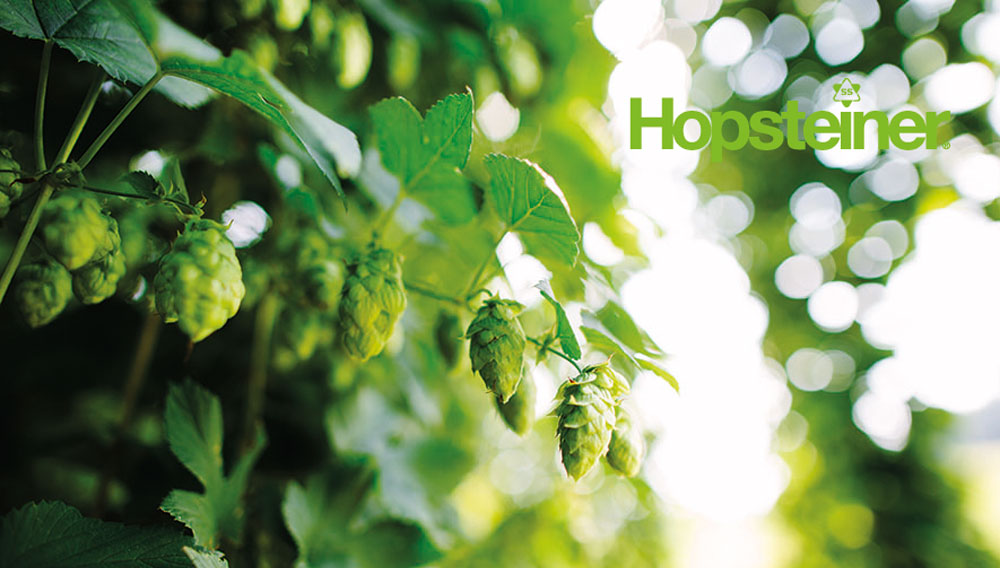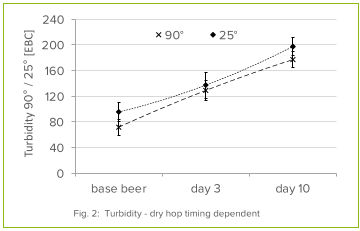Dry hopping affects beer turbidity
Technical support | After adding hops for dry hopping, beer is constantly changing its properties. The interaction between hops and beer can be observed visually on the changing beer turbidity during both processing at the brewery and in the packaged beer.
Besides dry hopping itself, the choice of raw materials and remaining yeast have an impact on the haze of beer. Dry hopped beer styles are often unfiltered and the consumers expect a certain haziness.
We conducted a new study to investigate the effects on beer turbidity after dry hopping in detail. Firstly, depending on the quantity of hop pellets added (fig. 1) and secondly, when varying the dosing point while maintaining a constant hopping rate (fig. 2).
Both scenarios resulted in significant effects with regards to the increase in turbidity in the dry hopped beers. Gradually increasing dry hop dosing rates correlated well with the greater turbidity. Also, the haze was clearly intensified with a very late dry hop dosage at the end of maturation.
Summing up, the more and the later hop pellets were added during production in the cold section, the more haziness can be achieved in fresh dry hopped beer. Keep in mind that during time of beer storage, the appearance can change and a certain sedimentation might occur. We have also investigated this issue in our study. If you like to know more about it, keep an eye on our shortly published paper in the next BrewingScience (Volume 77 - Number 7/8)
Hopsteiner Newsletter September 2024 (PDF)


![Fig. 1: Turbidity - quantity-dependant [pellets type 90 in g/hl] Fig. 1: Turbidity - quantity-dependant [pellets type 90 in g/hl]](/images/BWI_NL/hopsteiner/2024/brauwelt-1-turpidity-quantity-dependant-2024.jpg)

